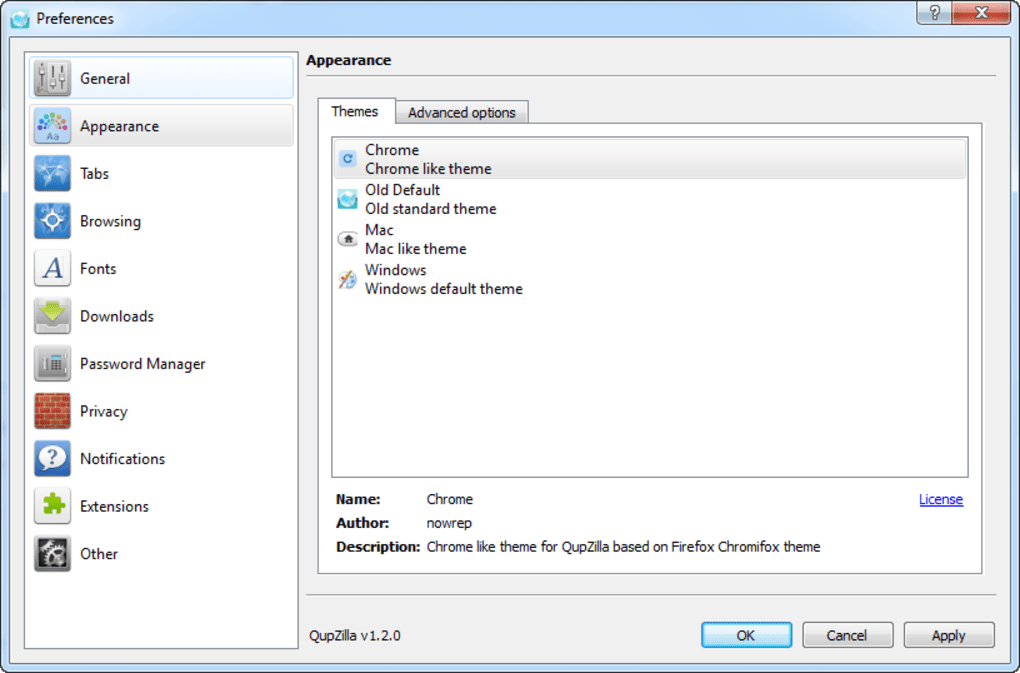

- #QUPZILLA SYSTEM REQUIREMENTS INSTALL#
- #QUPZILLA SYSTEM REQUIREMENTS UPDATE#
- #QUPZILLA SYSTEM REQUIREMENTS SKIN#
- #QUPZILLA SYSTEM REQUIREMENTS FULL#
- #QUPZILLA SYSTEM REQUIREMENTS SOFTWARE#
#QUPZILLA SYSTEM REQUIREMENTS INSTALL#
Install plasma-pa or kmix (start Kmix from the Application Launcher).
#QUPZILLA SYSTEM REQUIREMENTS UPDATE#
This will present a front-end for that allows you to install, uninstall, or update third-party Plasmoid scripts with just one click. Plasmoid scripts can also be installed by right-clicking onto a panel or the desktop and choosing Add Widgets > Get New Widgets. Plasmoids are widgets for plasma desktop shell designed to enhance the functionality of desktop, they can be found on the AUR. The file corresponding to your username can be removed to restore the default avatar. To configure with a graphical interface, you can use System Settings > Users, which may first need to be installed (see the plasma-desktop package). Plasma and SDDM will both use images found at /var/lib/AccountsService/icons/ as users' avatars. Numix-Frost-Light looks similar to Breeze.
#QUPZILLA SYSTEM REQUIREMENTS SKIN#
the Numix-Frost-Light skin of the numix-frost-themes AUR under System Settings > Appearance > Application Style > Configure GNOME/GTK Application Style. To workaround this, install and select e.g. Some GTK2 programs like vuescan-bin AUR still look hardly usable due to invisible checkboxes with the Breeze or Adwaita skin in a Plasma session. For GTK3 application two files need to be changed, gtk.css and settings.ini. To change the colors in GTK2 applications, find the section for tooltips in the. In some themes, tooltips in GTK applications have white text on white backgrounds making it difficult to read. Reason: The Plasma GTKd background service overwrites GTK settings on Plasma startup. Global themes can also be installed through System Settings > Appearance > Global Theme > Get New Global Themes. #Icon themes, providing icons for applications, files, and actions.įor easy system-wide installation and updating, some themes are available in both the official repositories and the AUR.Application styles that use theme engines such as Kvantum, QtCurve, QSvgStyle, and Aurorae.Application styles, modifying the look of programs.These often have a recommended accompanying Kvantum or Aurorae theme to complete the look. Plasma themes, modifying the look of Plasma panels and widgets.Global themes, comprehensive packages that can include Plasma themes, application styles, colors, fonts, icons, cursors, splash screens, SDDM themes, and Konsole color schemes.There are different types of KDE themes, varying by scope of what they modify: It can be started from a terminal by executing systemsettings. However, configuring KDE is primarily done through the System Settings application. Most settings for KDE applications are stored in ~/.config/. Manually starting a dbus-session through dbus-run-session should not be needed. To start a Plasma on Wayland session from a console, run startplasma-wayland.If you want to start Xorg at login, please see Start X at login. To start Plasma with xinit/startx, append export DESKTOP_SESSION=plasma and exec startplasma-x11 to your.Select Plasma Mobile (Wayland) to launch a new Plasma Mobile session in Wayland.Select Plasma (Wayland) to launch a new session in Wayland.Select Plasma (X11) to launch a new session in Xorg.Tip: The preferred display manager is SDDM. See Official repositories#kde-unstable for beta releases. Note that this will only install applications, it will not install any version of Plasma. If you only want KDE applications for a certain category such as games or education, install the relevant dependency of kde-applications-meta.
#QUPZILLA SYSTEM REQUIREMENTS FULL#
To install the full set of KDE Applications, install the kde-applications group or the kde-applications-meta meta-package. If that does not work, too, check the instructions on the KDE wiki.

If you are an NVIDIA user, also install egl-wayland if it is not already installed, and if the session does not start with the proprietary nvidia driver, also enable the DRM kernel mode setting. To enable support for Wayland in Plasma, also install the plasma-wayland-session package. Alternatively, for a more minimal Plasma installation, install the plasma-desktop package. For differences between plasma-meta and plasma reference Package group. Install the plasma-meta meta-package or the plasma group. Detailed information about most KDE applications can be found there.īefore installing Plasma, make sure you have a working Xorg installation on your system. KDE upstream has a well maintained UserBase wiki.
#QUPZILLA SYSTEM REQUIREMENTS SOFTWARE#
KDE is a software project currently comprising a desktop environment known as Plasma, a collection of libraries and frameworks (KDE Frameworks) and several applications (KDE Applications) as well. Uniform look for Qt and GTK applications.


 0 kommentar(er)
0 kommentar(er)
